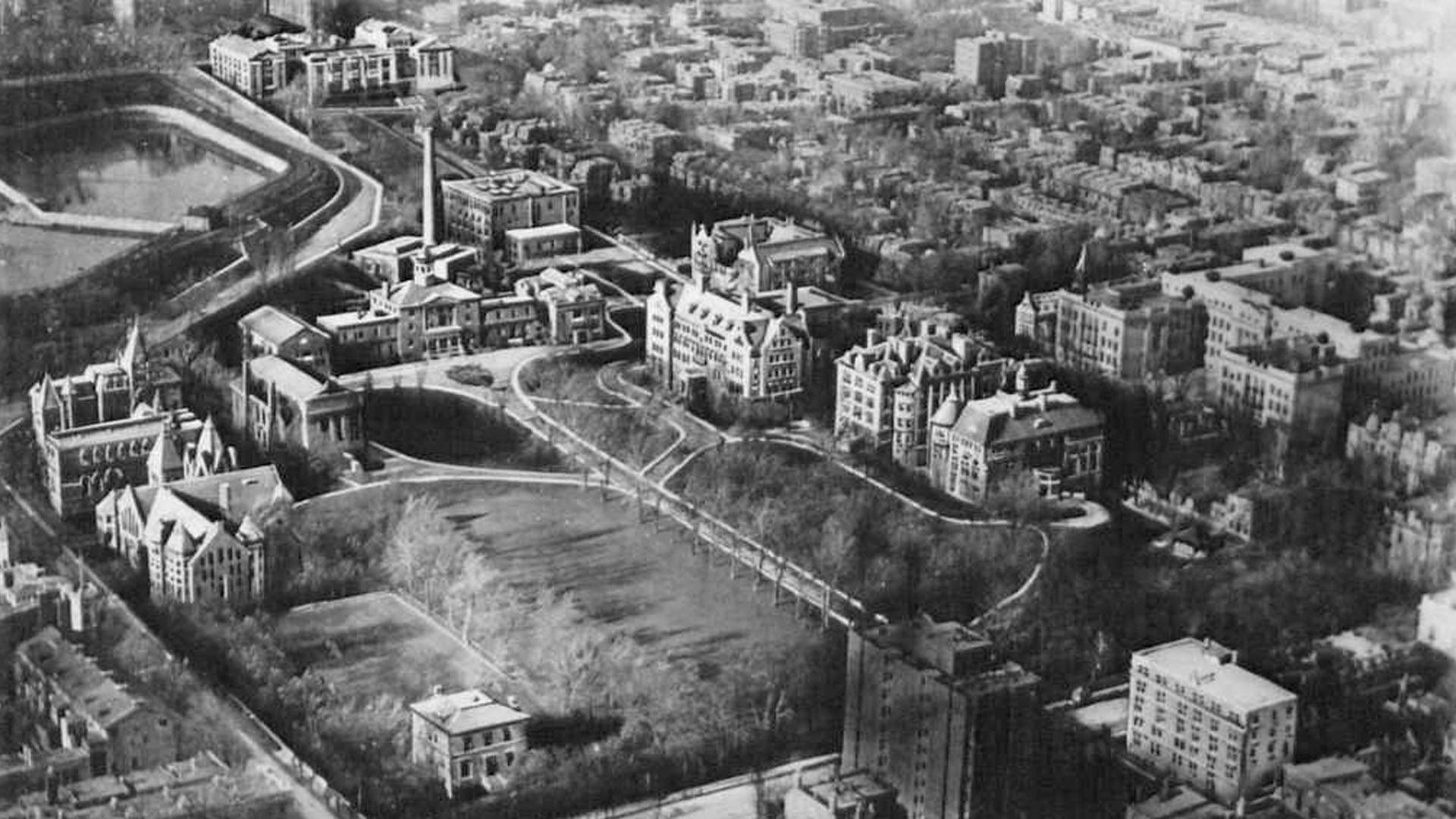
The Site
The Island of Montreal remains the un-ceded territory of the Haudenosaunee and Anishinaabeg peoples.
Tekanontak
Meaning “Two Mountains”, Tekanontak is the traditional Kanien'kehá:ka name of Mount Royal, at the heart of Montreal. It is the location of the Iroquoian village that Jacques Cartier, the first French explorer of the region, witnessed in 1525, and sheltered an estimated 3000 inhabitants in 50 to 70 longhouses. A crucial location from which all the surrounding waterways can be observed, Tekanontak was used to send smoke signals that were picked up in the Adirondaks before making their way down the East Coast, according to Indigenous oral history. It was and remains one the largest burial sites in North America.
Mount Royal is the only location with both a Natural and Heritage Site status in Quebec, which means that it is supposed to be protected and controlled by special provincial and municipal rules under Quebec’s Cultural Heritage Act.
-

Royal Victoria Hospital
Established in 1893, the Royal Victoria Hospital is part of the McGill University Health Center. Once considered a hospital for the poor, it served many Indigenous and Inuit patients. The hospital closed and moved to a new site in 2015, in what was both the biggest relocation and the biggest financial fraud in Canadian history.
-

Allan Memorial Institute
Built in 1863 to serve as a villa for Sir Hugh Allan, a shipping magnate and wealthy railway promoter, the Institute was absorbed into the Royal Victoria Hospital by 1940 and became a psychiatric ward in 1944. The CIA’s MKULTRA medical program experiments were conducted in the building between 1957 and 1964. Under the direction of its founding director, Dr. Donald Ewen Cameron, the medical experiments centered on developing drug-induced mind control.
-

McGill University
In the mid-1800s, a loan by the Province of Canada saved McGill University from financial crisis. Money for the loan was borrowed from Six Nations’ Trust Funds without the consent of the communities. While the university paid off the loan in 1881, money borrowed from the Six Nations Trust Funds was never reimbursed.
-

Montréal, Québec, Canada
Established in 1642 by the French, Montréal was never surrendered by its Indigenous inhabitants, whose traditional legal framework and governance system remains in effect. Section 35 of the Constitution of Canada,1982 “recognizes and affirms Aboriginal rights,” and considers all inconsistent laws “null and void”.
Evidence of Montreal’s historical Indigenous presence has been consistently destroyed for the sake of the city’s development and expansion. Now that the Truth and Reconciliation Commission has found that the residential school system amounted to a cultural genocide of Indigenous people, the Mohawk Mothers consider that its subsoil must be preserved as forensic evidence of colonial crimes.
What is The New Vic Project?
The New Vic project aims to repurpose part of the former Royal Victoria Hospital site into a new sustainable development campus for McGill University. In 2019, Quebec ceded part of the property to the University, and committed $475 million to assisting the school with the site’s transformation. The ambitious project involves extensive renovation of the existing buildings, as well as excavation of the grounds.
Although McGill University acknowledges that its campus “has long served as a site of meeting and exchange amongst Indigenous peoples,” its promoters have consistently ignored the concerns of the Mohawk Mothers, who are the traditional caretakers of the land.